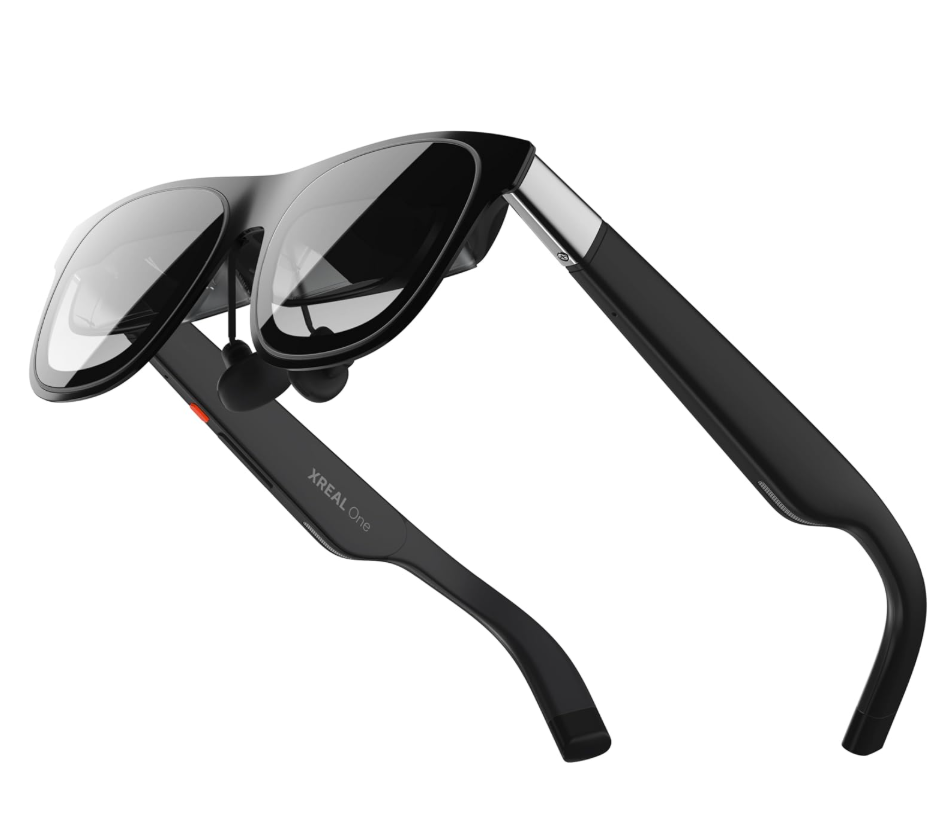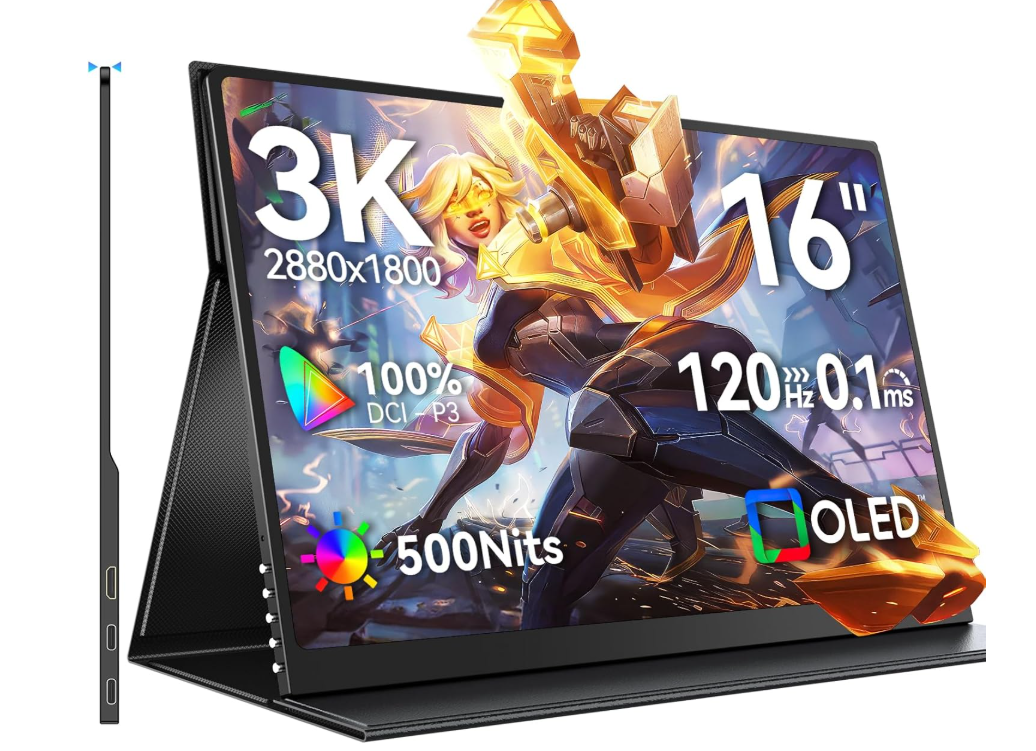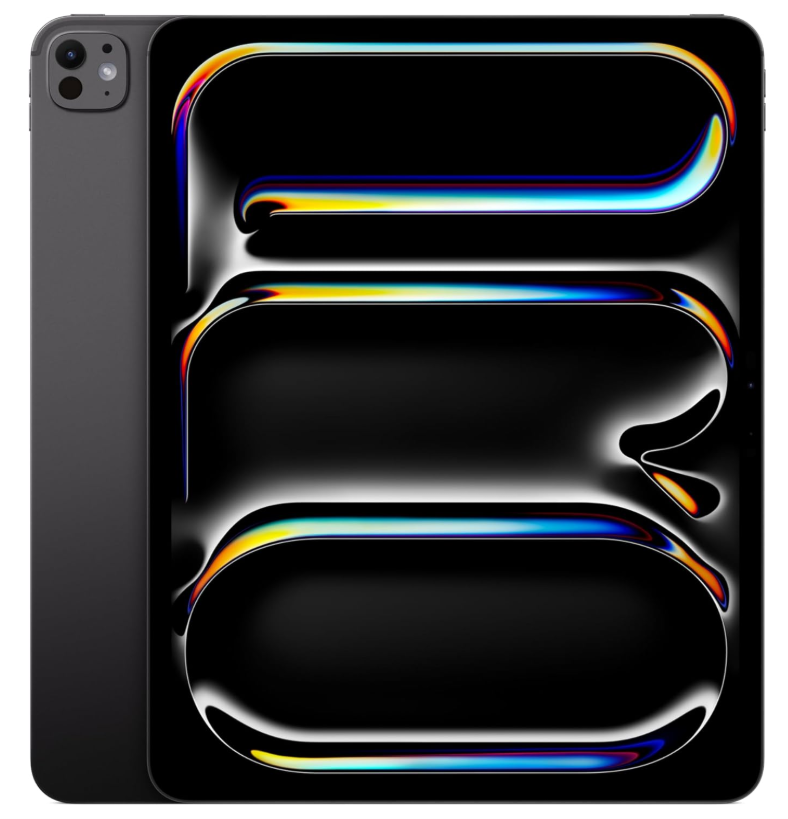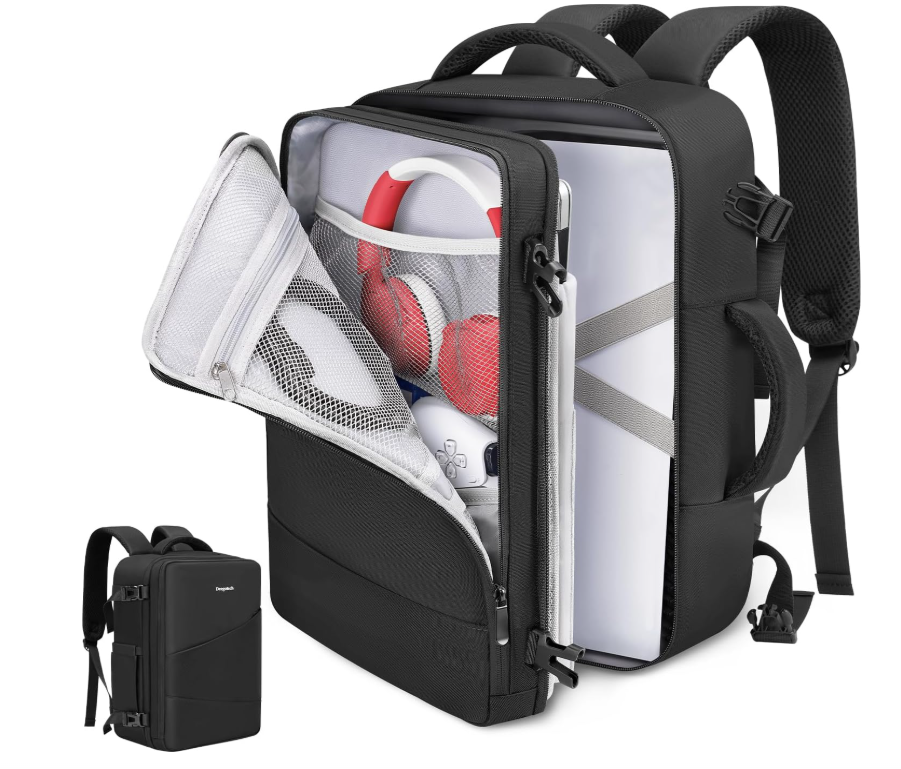
If you own a PlayStation 5, an Xbox Series X, or an Xbox Series S and you’re going to work, on vacation, or over to a friend’s house, how do you take that console experience with you without bringing a gaming PC or a laptop? How do you use what you already have and keep playing on your console?
There are a few solid options. I’ll start with my favorite and the most unique.

These are glasses you wear on your head that give you a virtual 147-inch screen. They get the 147" number from a calculation of what your perentage of your field of view would be taken up if you were sitting 10 feet away from the TV, in this case 147". They’re micro-OLED, 1080p, up to 120 Hz—so a very capable, very good display you can wear and easily take anywhere with you. They’re super light even though they are packing speakers, a display and a chip built into the glasses themselves for extra functionality. I’ve used them, and I really like them.
When you first put them on, you might be a little confused or doubtful about the quality because the edges can look a bit blurry. Once you find the right fit and the right nose clamp and then put on a TV show, a movie, or your video games, the quality really settles in and looks good. They’re not great for reading text or browsing the internet—scrolling web pages isn’t the best experience—so I wouldn’t recommend them for that. For media consumption and gaming, they’re excellent.
The newer editions let you lock the screen in place so you can move your head and the image won’t follow you; it stays fixed. That helps a lot with comfort over long sessions. Older versions followed your head and could get visually uncomfortable.
There is a toggle on the glasses as well that allows you to adjust how much light comes through the glasses. This allows you to have a transparent screen or a screen against a black background.
What you need:
The console will recognize the display, resolution, and refresh rate, and you’ll be able to play just like you would on your TV at home. It’s very simple and quick. The only real consideration is whether you’re okay having something on your head while you play.

Another option is a portable monitor. Recently, Uperfect released an OLED portable gaming monitor that’s 3K, up to 120 Hz, and around 500 nits. That’s strong brightness, resolution, and refresh rate. You get OLED contrast and color, which is the best you can get right now for picture quality.
Setup is straightforward:
The monitor should come with a charging cable; you may need to supply your own HDMI cable, but your console likely came with one anyway. It’s a simple setup.
I also recommend a small, adjustable stand. The built-in flap stand works, but it doesn’t give you many angles. A compact stand with multiple positions lets you aim the screen exactly where you want it. Whether you’re leaning back or sitting up, you can keep it comfortable and ergonomic for longer gaming sessions.
These types of monitors come in various sizes, resolutions and refresh rates. For console gaming, a 60hz panel is sufficient. Just make sure to check the ports on the model that you purchase. Some of these devices only come with USB C connections or a mini HDMI port; in that case you would need to get adapters to have those connect to your console. Those adapters are easy to use, just be aware that you may need them. The model listed above does not need an adapter.
What you need:

You can use an iPad—really any iPad—but I recommend the iPad Pro (M4 or M5) because the tandem OLED displays are extremely bright and among the best OLED panels out there. I like the 13-inch for the larger screen, but the 11-inch works well if you want something smaller and more portable.
When you connect an Xbox, games are 16:9, so the iPad will show black bars on the top and bottom. That’s normal. You’ll see a bit more of that on the 13-inch simply because it’s larger, but overall you’re still getting a bigger image than on the 11-inch.
What you need:
If you’re playing for a long time, consider a USB-C hub so you can charge the iPad while using HDMI at the same time. An Anker hub works well—I have it linked—and it keeps the iPad powered while it’s acting as your HDMI display.

If you have a good Wi-Fi connection where you’re playing, you can stream.
You can also use Xbox Cloud Gaming. They did raise the price a few weeks ago, so it’s a little more expensive now, but you get access to a lot of games, including big AAA titles, streamed from Microsoft’s servers. There’s added latency and overall quality isn’t as good as a direct HDMI connection, but it definitely works and the value is solid.
If you have a GeForce Now subscription, you can play your PC games the same way—streamed via NVIDIA’s servers—again assuming you have a good connection.
If you want the best streaming experience and you have a strong connection both at home and where you are, you can use Sunshine and Moonlight. That lets you stream your desktop PC to your tablet or laptop, and your Xbox can also connect to the Moonlight server as well. This is the best connection and experience of all the streaming options, but it requires the most setup and tinkering, and sometimes some troubleshooting. I have a separate article on setting up Sunshine and Moonlight that I can link so you can get it working.

To pull all of this together, I recommend a console carrying case. There are versions made for PS5, Xbox Series X, and Series S. It’s basically a backpack that lets you pack your console, a portable monitor, and all the accessories you need.
I’d take it a step further: add a power strip and pre-connect everything inside the bag. Then, when you arrive, all you have to do is plug the power strip into an outlet. Set the PS5 on a table for good airflow—I wouldn’t leave it in the bag since it could overheat—and set up your portable monitor. With everything pre-connected, you just plug in the power strip and you’re ready to go. That’s the easiest, fastest way to get up and running.
What you need: